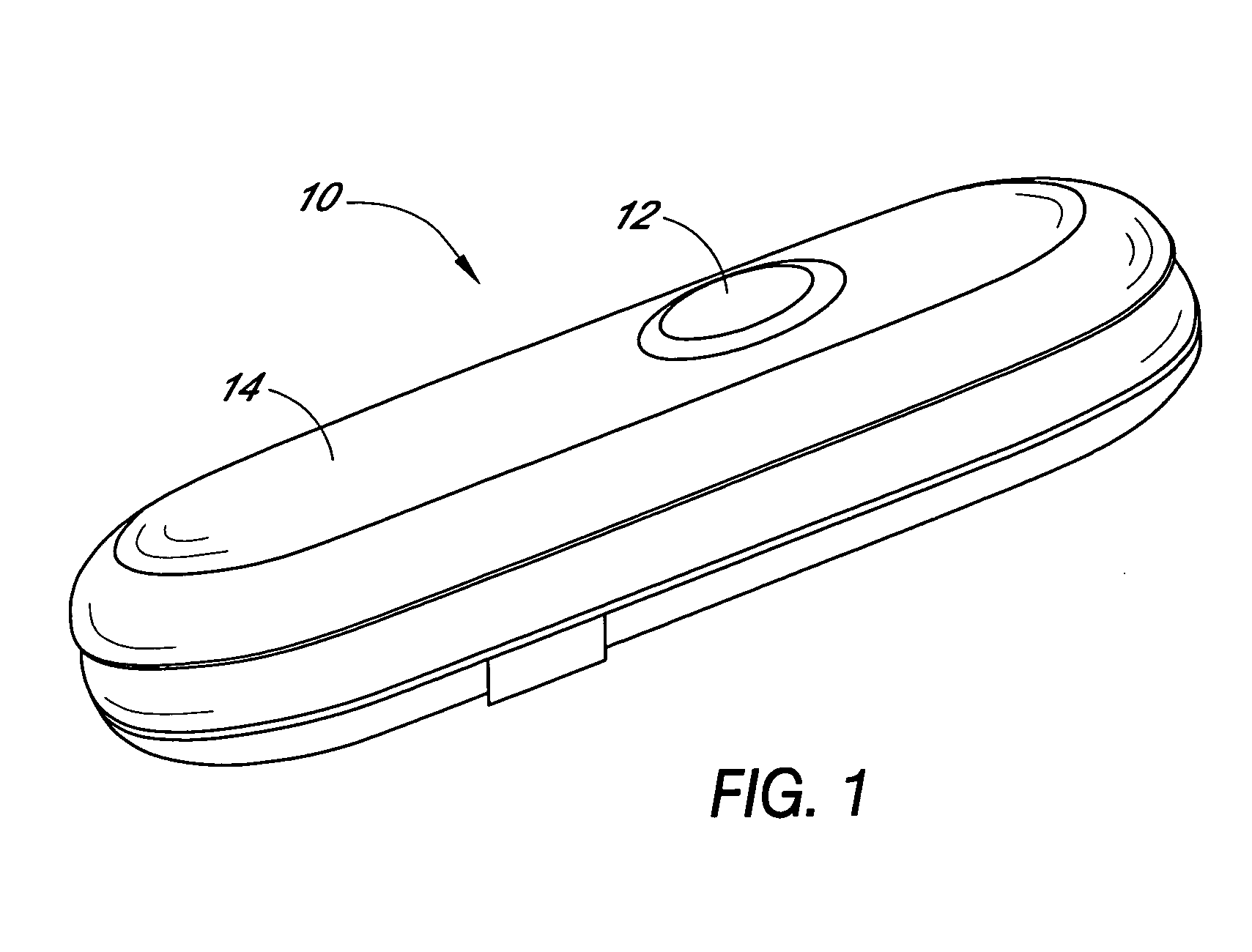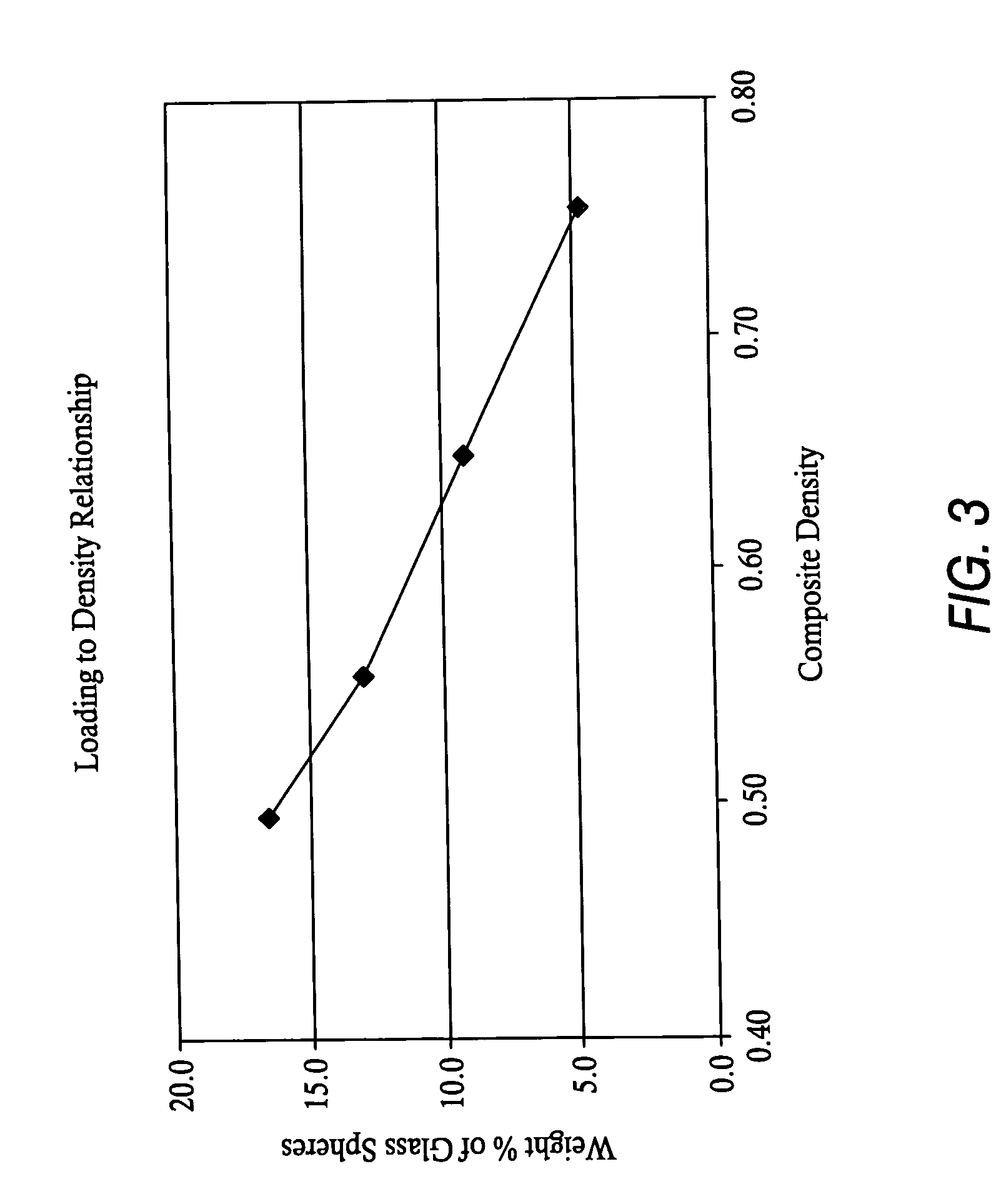Composite material for implantable device
a technology of implantable devices and composite materials, applied in the field of composite materials for implantable devices, can solve the problems of higher density and mass than otherwise necessary, design suffers from design and manufacture complexity,
- Summary
- Abstract
- Description
- Claims
- Application Information
AI Technical Summary
Benefits of technology
Problems solved by technology
Method used
Image
Examples
example
[0057] An experiment was performed wherein four different amounts of glass beads were each added to three grams of epoxy, after which the material was cured and their densities measured. The results in Table 1 were then graphed to show the weight percent loading to density relationship of the glass beads in epoxy.
TABLE 1epoxyglassdiam-Sam-weightspheresetervolumemassdensitywt. %ple(g)(g)(mm)(ml3)(g)(g / ml3)loading13.000.15035.743.434182.58960.75414.823.000.30035.764.584032.97790.64969.133.000.44735.785.135492.85060.555113.043.000.59935.745.014992.48240.495016.6
[0058]FIG. 3 is a graph that illustrates the relationship between loading and density determined from the above-described experiment. The x-axis represents the density of the composite material in g / ml3. The y-axis represents the weight % of glass beads (spheres). The graph shows that the addition of 17 weight percent glass beads to the epoxy reduces the density of the epoxy to about 0.5 g / ml3. The density of the epoxy materia...
PUM
| Property | Measurement | Unit |
|---|---|---|
| Diameter | aaaaa | aaaaa |
| Diameter | aaaaa | aaaaa |
| Diameter | aaaaa | aaaaa |
Abstract
Description
Claims
Application Information
 Login to View More
Login to View More - R&D
- Intellectual Property
- Life Sciences
- Materials
- Tech Scout
- Unparalleled Data Quality
- Higher Quality Content
- 60% Fewer Hallucinations
Browse by: Latest US Patents, China's latest patents, Technical Efficacy Thesaurus, Application Domain, Technology Topic, Popular Technical Reports.
© 2025 PatSnap. All rights reserved.Legal|Privacy policy|Modern Slavery Act Transparency Statement|Sitemap|About US| Contact US: help@patsnap.com



